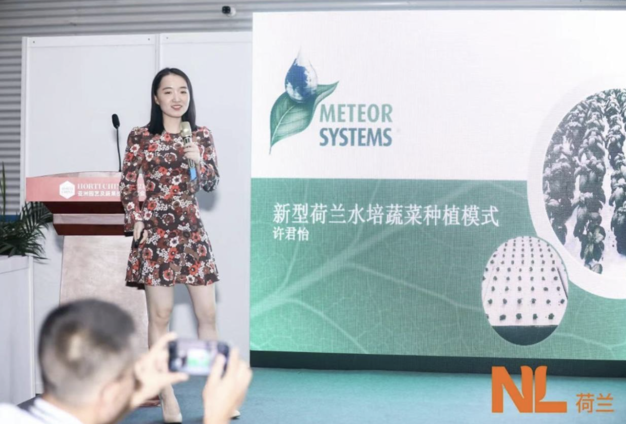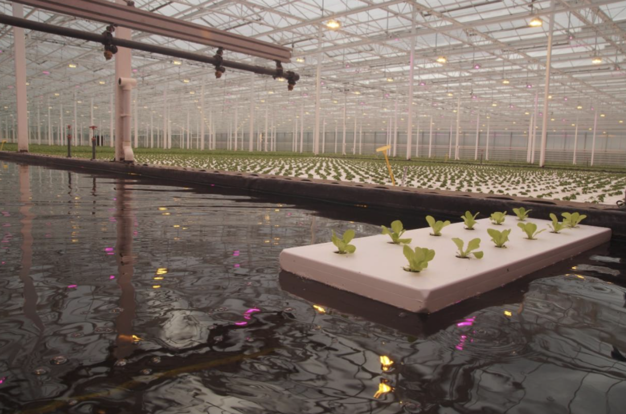One of the most recent developments in Deep Water Culture cultivation is a new type of floating raft, made out of HDPE material, a certain type of plastic. During the recent Horti-China exhibition, Meteor Systems Chinese representative Junyi Xu explained how this helps growers in their cultivation.

Junyi explained how there are two kinds of hydroponic systems, Nutrient Film Technology (NFT) and Deep Water Culture (DWC). "In NFT, a shallow stream of water is used along the bare roots of plants in a watertight flume. DWC is a hydroponic method of plants production by means of suspending the plant roots in a big tank of nutrient-rich, oxygenated water."
"With hydroponic systems, growers can have better quality and safer products. Meanwhile, this way of cultivation has higher efficiency for water and fertilizer usage. Together with high tech automation, hydroponic cultivation improves labor and logistic efficiency as well," she said.
DWC stems from Roman times. Chinese growers use DWC a lot: "it is flexible in plant density, growers can grow any type of leafy greens and herbs with it. The maintenance costs are low, and is water buffer, which results in more stable PH and water temperature, etc."
The new development in DWC is a new type of floating raft, made out of HDPE material. "These floating rafts are easy to clean and have a longer lifespan," Junyi said. "Due to the unique shape of the planting hole, the raft is suitable for both traditional substrate plugs as well as substrate-free cultivation. In addition to those advantages, the plant side of the raft sees a slower temperature increase."

"Comparing the new floating raft to the traditional floater, which is made by foam, EPS (Expanded Polystyrene), shows the traditional floating raft has a short life cycle and is not environment friendly. Besides, foam can absorb water, which makes it difficult to clean and influence growing results."
The HDPE floating raft can be used in DWC, NFT, ebb and flow, and Aeroponic systems. Junyi says Meteor Systems developed and produced several floating rafts in different shapes and sizes for these purposes, depending on the type of crop and wishes of the customer. "In China, different kinds of green leaves like lettuce, mints, spinach, and even Chinese cabbage are extremely popular among Chinese customers. That’s why these floating rafts are more and more in demand by growers over there."
For more information:
Bas Dirven
Meteor Systems
bas@meteorsystems.nl
+31765042842.
